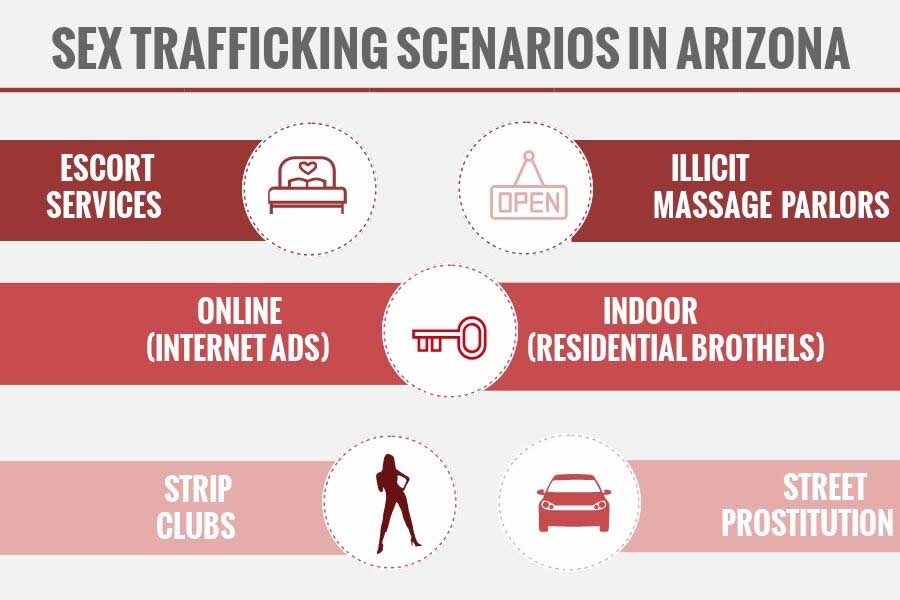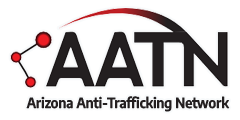Human Trafficking 101
Human Trafficking is often said to be the fastest growing crime in the world. People are sold into slavery for various jobs, including prostitution, erotic entertainment, internet and video pornography, sexual servitude, domestic work, debt bondage, childcare, factory work, construction, and agricultural labor.
What is Human Trafficking?
The federal Trafficking Victims Protection Act defines the crime of human trafficking as:
A. Sex trafficking is the recruitment, harboring, transportation, provision, obtaining, patronizing, or soliciting of a person for the purposes of a commercial sex act, in which the commercial sex act is induced by force, fraud, or coercion, or in which the person induced to perform such an act has not attained 18 years of age
B. Labor trafficking is the recruitment, harboring, transportation, provision, or obtaining of a person for labor or services, through the use of force, fraud, or coercion for the purposes of subjection to involuntary servitude, peonage, debt bondage, or slavery

An Overview and Introduction to Human Trafficking
Child sex trafficking occurs when U.S. citizen or lawful permanent resident minors (under the age of 18) are commercially sexually exploited.
“Sometimes referred to as Domestic Minor sex trafficking or DMST” it refers to the age and citizenship of the victim. Children can be commercially sexually exploited through prostitution, pornography, stripping, erotic entertainment, or other sex acts. The commercial aspect of the sexual exploitation is critical to separating the crime of trafficking from sexual assault, molestation, or rape. The term “commercial sex act” is defined by the federal Trafficking Victims Protection Act as the giving or receiving of anything of value (money, drugs, shelter, food, clothes, etc.) to any person in exchange for a sex act.
Many people confuse human smuggling with human trafficking.
Human trafficking and human smuggling are distinct criminal activities, and the terms are not interchangeable. For purposes of clarification, human smuggling is centered on transportation. It is a crime against a country by evading immigration laws. This offense includes bringing illegal aliens into the country, as well as the unlawful transportation and harboring of aliens already in the United States.
Trafficking is a crime against the person, smuggling is a crime against a border. Human trafficking is a crime against a person for by using force, fraud or coercion to induce a commercial labor or commercial sex act.
Under the Trafficking Victims Protection Act (TVPA) human trafficking requires force, fraud or coercion UNLESS the victim is a minor. Any minor used in a commercial sex act is a victim of trafficking, regardless of their willingness or desire to engage in the sex act. The age of the victim is the critical issue — there is no requirement to prove force, fraud, or coercion was used to secure the victim’s actions. The law recognizes the effect of psychological manipulation by the trafficker, as well as the effect of threat of harm which traffickers/pimps use to maintain control over their young victims.
Slavery was abolished in the United States in 1863 with the Emancipation Proclamation and in 1865 under the Thirteenth Amendment of the United States Constitution. However, modern-day slavery continues in America in the form of human trafficking.
THE BUSINESS OF TRAFFICKING
Human trafficking is a business, and for any business to survive, it requires supply and demand.
In this case, there appears to be a growing demand fueled by easy access through the internet, and a ready supply of victims that are constantly being recruited and exploited.
Sadly, some victims are trafficked by family members while others are initiated into “the life” through an older boyfriend or girlfriend who forces them to perform commercial sex acts for personal profit. These victims often have a difficult early life including poverty, child maltreatment, domestic violence or substance use in the home which places them at risk for being trafficked.
Some of these victims are very young, who may be more vulnerable to the coercion and manipulation of traffickers. While these victims may appear to look 18 years old or give a false age when asked, the average age of entry into sex trafficking as a minor in Arizona is around 14 years old.


THE TRAFFICKER
Vulnerable youth may be recruited via friends, while on the street as a runaway, and at locations frequented by adolescents including shopping malls, schools and over the internet. Traffickers use a variety of tactics to recruit victims; they may act as a boyfriend (a “Romeo pimp”), use force tactics such as physical abuse or threats (a “guerilla pimp”), other methods include befriending potential victims or require- one of their current victims to befriend a new girl.
Victims are controlled by their trafficker through beatings, isolation, starvation, and psychological abuse, threats against family or friends, rape, debt bondage and drug dependency.
Instructions about how to be a successful pimp and recruitment methods can easily be found on the internet through sites such as Snapchat, Facebook, Instagram etc. The modern-day pimp/trafficker may seem like a relatively normal person to someone who is vulnerable. Traffickers may court their victims with romantic relationships, shopping trips, make them feel comfortable and gain their trust. Soon after, the physical and emotional violence, manipulation and threats begin. Traffickers are master manipulators and use tactics to create a trauma bond between the victim and trafficker. Trafficked victims are trapped inside a system of coercion, violence, and fear.
Victims working under the control of a trafficker are often given nightly quotas and can endure countless of incidents of rape while being trafficked.
Successful prosecution of traffickers is a long and complicated process for law enforcement. It is very difficult to get victims to testify against their traffickers. Victims are often scared and fear retaliation. In recent years cases of trafficking in Arizona have been successfully prosecuted throughout the state.
PROFIT
Profits worldwide from human trafficking is a multi-billion-dollar business.
Sex trafficking is a high profit, low risk business where the commodity can be sold repeatedly, unlike drugs or weapons, where the product can only be sold one time.
While the list of internet sources where sex can be advertised and purchased is ever-changing, nearly 80 percent of the ads that were posted as ‘adult services’ on Backpage.com were actually for the sale of sex. On April 6, 2018 federal authorities seized Backpage.com while simultaneously raiding the site founders’ homes in Arizona. The founders Michael Lacey and Jim Larkin have been charged with conspiring to knowingly facilitate prostitution offenses through the website. Authorities contend some of the trafficked people included teenage girls.
WHAT CAN BE DONE?
The mere discussion of sex trafficking in Arizona sparks outrage, yet there is much work that needs to be done to really impact the industry.
Arizona should be a state where trafficking is neither ignored nor tolerated, but rather a place where criminals are punished, and buyers think twice before purchasing sex.
In order to make additional progress, Arizona needs to create tougher laws to punish traffickers and those who knowingly purchase sex. Many refer to Arizona’s drunk driving laws as an example and its success in the overall reduction of the incidence of people drinking and driving.


